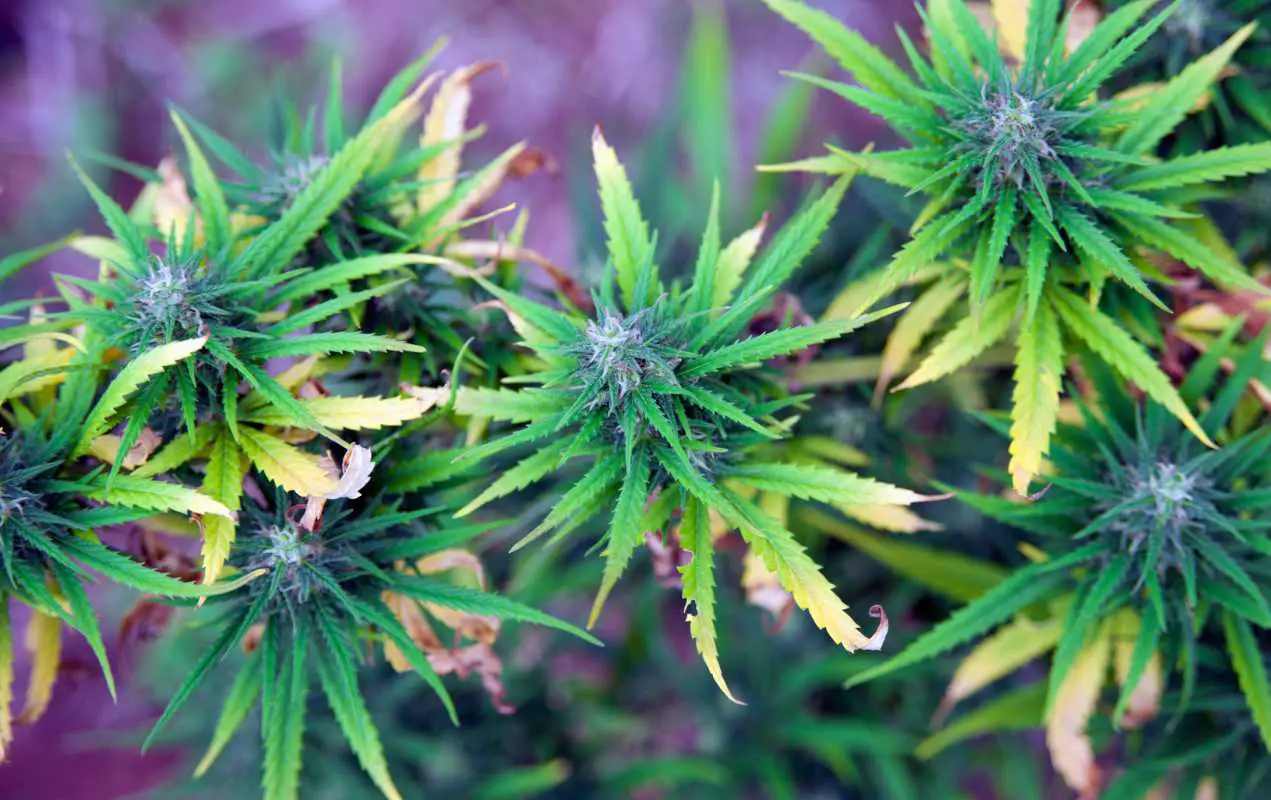Cannabis expresses its stresses mainly through the leaves and buds. So when you notice the leaves and buds become anything but ordinary, you want to look into the problem fast.
Sometimes the leaves deform and change color, even wilt as a natural process, but other times, the leaf discoloration and deformities reveal a deep-seated problem.
When your cannabis buds turn brown and crispy, it’s scary. You might think you’re losing your ladies to the bug. Crispy buds are far more worrying because they crumble and turn to dust when you crush them between your fingers.
The buds are the reason you sweat it out, and when they get attacked at the last stages, you want a solution as quickly as possible, and later an explanation and counsel on how to move forward.
The Problem With Discolored And Deformed Leaves
The buds are the reason you sweat it out, but the leaves play no more minor role in creating the said buds. The leaves are the kitchens of the plant. Photosynthesis happens in them, and the healthier they are, the robust the plant.
If suddenly the leaves are brown and deformed and dry and begin falling, you’re treading on a losing path. All the affected leaves reduce the greenness—the ‘solar panels’ for photosynthesis.
When you lose so many leaves, your plant will become weaker and more susceptible to diseases because they are starved. They lack the natural life energy to fortify them against environmental hazards.
Thus, you want to deal with all the problems that turn the color of your leaves from green to anything else as quickly as possible because they point to a deeper problem.
RELATED READ: What Causes Deformed Leaves in Cannabis Plants? (Causes & Remedies)
It could be nutrient issues, light burn, fluctuations in temperatures, pests, or bud rot.
Whatever the case, don’t panic. Most cannabis ailments are pretty easy to remedy when you diagnose them earlier.
The plant itself might seem fragile, but cannabis is pretty hardy and can survive a beating from the environment, like pests and fluctuations in the growing conditions.
What Makes The Buds Turn Brown And Crispy?
The buds will turn brown and crispy because of root rot, light burn, nutrient deficiencies or excesses, and watering problems. It takes a closer look to check off areas you’re getting right so that you single out the most probable cause. For most newbies, it’s mostly light burn because most staters place them too close to the canopy to get maximum intensity.
Here, let’s dig deeper into what stands between you and a heavy-laden yield.
What Makes Cannabis Buds Turn Brown And Crispy
Brown and crispy buds are a common symptom of many ailments. The plant does react to light burn the same way it shows nutrient burn— the leaves changing color and curling, whichever way. It really takes a closer look at your routines. Look for these indicators;
Are You Overwatering The Plant?
The plant needs water, alright. But we have all made the mistake of watering the plant every chance we get. The plant needs short dry periods for root growth and development, and to steer clear of root-related problems.
Overwatering forces the plant to absorb more water than it needs, and the water stays in the plant, and when the leaves can’t lose as much water through the stomata, the cells burst. The dead cells, by default, lose their green color and turn brown.
Overwatering is a problem weed suffers when you give it more than it needs. So when you cut the supply and keep a favorable schedule, you can rectify the problem.
Before you water the plant, check if the ground is dry enough to warrant a refill. Dip your forefinger into the soil; if it’s not dry up to 5 cm deep, don’t add water.
Periods of little moisture in the soil are suitable for the plant’s root health. When the roots stretch in search of water and essential nutrients, root development occurs. Waterlogging the plant makes them more susceptible to root rot, which hosts many plant problems.
I wrote a guide on how to fix overwatering in cannabis plants. Maybe you should go through it to know for sure when to water the plant for healthy growth and how to combat overwatering if it occurs.
Your Lights Could Be Too Close To The Plant’s Canopy
Cannabis plants need light of the right intensity. Right intensity is often confused with high intensity— the two don’t mean the same thing.
When you lower your lights too close to the plant’s canopy, they get burnt, leaving your buds dry, brown and crispy.
Lights that emit too much heat keep the grow room hot. The heat scorches the buds, making them brown and crispy.
The heat also affects the leaves, drying them before falling to the ground. The affected leaves crumble to touch and often assume a darker color.
Keep the lights close enough to hasten photosynthesis but far enough to avoid light burn.
How far you keep the lights from the plant’s canopy depends on the lights you use. Some lights emit more heat than others.
For fluorescents, leave a safe distance of 5” between the lights and the canopy, while for HIDs, leave at least a 12” gap for the 400W light.
The stronger the wattage, the higher you want to hang the light above the canopy. The light should penetrate the foliage for sure, but when you hang a 1000W HID grow light at 10” above the plant, they’ll surely get burnt.
The better solution to the heat problem is to move to more efficient grow lights. LED grow lights emit less heat and thus have low chances of heat stress or light burn.
Could It Be Bud Rot?
If you keep the buds in too humid conditions, they will be prone to bud rot. And when it happens, mold spores eat into the buds, turning them brown and crispy on the outside and damp on the inside.
When dealing with bud rot, you want to contain it before it causes further damage. However, any affected buds can’t be saved. Smoking moldy buds can potentially harm your lungs.
Isolate the affected buds and harvest the rest before they are affected as well.
Once you have spotted a few cases of bud rot, the right thing to do is to save the remaining buds. It’s okay to harvest earlier when you’re at high risk of these stubborn fungal infections.
Other than fungi, pests eating on your plants will sap liquids from the leaves, leaving them to wilt and dry.
Watch out for the aphids, thrips, spider mites, and whiteflies. These pests will suck from your plants, leaving the buds brown and crispy.
I wrote a helpful guide on how fast botrytis spreads and what you can do to kill it. You might want to read it too.
Could It Be The pH?
Your plants need both macro and micronutrients to flourish and yield massive buds. However, when the pH is either too high or too low, it sabotages your plant’s ability to absorb nutrients.
The lockout of essential micronutrients, especially magnesium and iron, will make the buds dry, brown, and crispy.
Can Moldy Buds Be Saved?
Mold and other fungal infections are better avoided by keeping the environment from dampness and too high humidity. Once mold invades your buds, just chop and trash them to prevent spreading the spores to the next plants.
Moldy buds aren’t safe smoked. If you can take chances, you can use them in making concentrates. There’s a widespread belief that the extraction process sieves mold too, a claim I’d take with a pinch of salt.
If you aren’t equipped with the genie of separating cannabinoids from all the gunk, you better leave it. Moldy weed can harm your lungs in ways clean weed wouldn’t.
Moldy weed contains dangerous fungi that can harm the CNS, and the lungs, especially in people with compromised immune systems.
In summary, buds can turn brown and crispy due to light burn or bud rot. It will either be the two, but there are other causes— as discussed above. Check everything, from the pH of the runoff to the temps, and ensure everything is working fine. I hope it’s something you can rectify in time to enjoy your buds.
External Resources:

